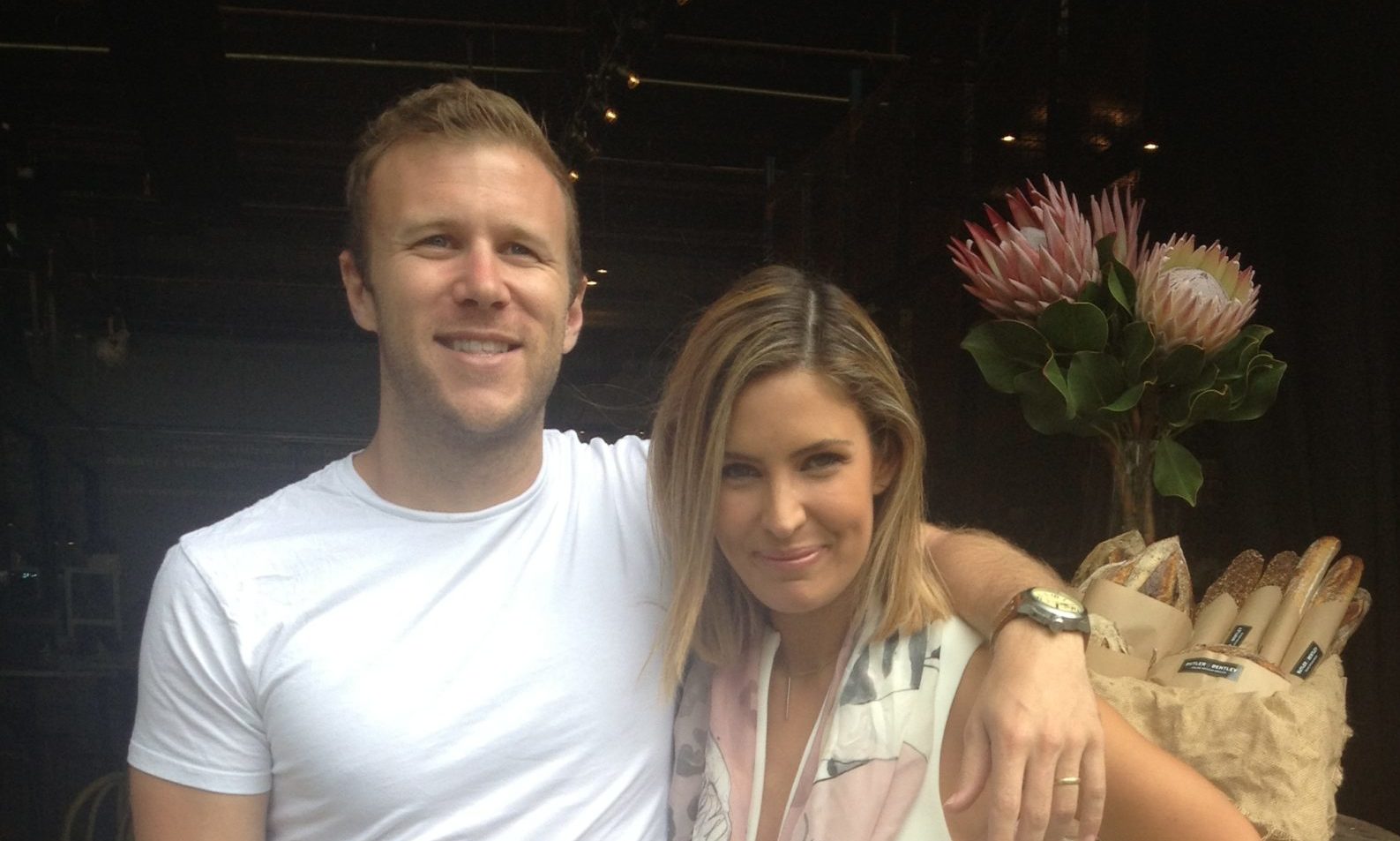“I was diagnosed with CML then found out I was pregnant”

When Elle Halliwell found out she was pregnant in early 2016 – two days after being told she had CML – a Leukaemia Foundation newsletter dating back to 2008 gave her hope.
It featured a story about Shelley Bell who was 10 weeks pregnant when the blood test that confirmed her pregnancy also showed she had CML. That was in 2007 and today her daughter Amelie is a thriving nine-year-old.
Elle’s husband, Nick Biasotto, found Shelley’s story on the Foundation’s website during a weekend of intense internet research prior to Elle’s first appointment with a haematologist on Monday May 2.
Their GP had already broken the news of Elle’s diagnosis on Thursday April 28.
Elle’s discovery that she had blood cancer, like Shelley’s, was a twist of fate.
Planning to start a family later that year, Elle, 31 of Sydney, who is the fashion editor of a Sydney newspaper, had a blood test to check her folate and vitamin D levels. These were fine, but she had an abnormally high platelet count.
Although Elle had a negative result from a pregnancy test two weeks earlier, she “had this weird feeling” that she needed to do another test.
“When I looked at the result and saw two little blue lines, I was just in shock. I was carrying my first child and thought – well, that’s not going to happen. How can someone with cancer carry a baby to full term?
“But Nick showed me some videos he’d found about pregnancy and CML, where doctors were open to the idea of continuing with a pregnancy in that situation although it was rare, and I read the story about Shelley.
“It instantly gave us hope that there was light at the end of the tunnel.”
The advice of the haematologist, who Elle met with two days later, was to terminate the pregnancy, have fertility treatment and freeze some eggs, go on TKI treatment for at least five years, then go off the treatment and try to conceive.
The Halliwells sought a second opinion, from internationally renowned CML specialist, Professor Tim Hughes in Adelaide.
“He gave us a vote of confidence that, although there were risks, I could see the pregnancy through, without the CML going to the accelerated or blast phase,” said Elle.
“My CML had been caught early. My Sokal (a prognostic evaluation of CML) level was right at the bottom, I felt great, my spleen was fine, my white blood cell count was okay and I had no other sign of CML other than high platelets.
“It was still so early and I didn’t know if I’d make it through the first trimester.
“We made the decision to go through with having the baby, and then we reached out to the Leukaemia Foundation to get in touch with Shelley.
“She agreed to have a chat and we had a really nice phone conversation about her experience and how she managed her eight-month pregnancy,” said Elle, who at that stage hadn’t begun treatment.
This gave her added hope and confidence, as did knowing that Shelly’s child was prospering, and that CML was not hereditary.
“We decided for the moment to continue as we were and felt that we had made the right choice and were not doing anything reckless,” Elle explained.
“This all made me feel a lot better about the decision, and that if I exercised and had a good diet, and had treatment, then my son had a good chance of being born and having a healthy start to life.”
In July, Elle started treatment on slow release pegylated interferon which she had intravenously once a week.
“I’ve responded very well, have hardly any side-effects apart from a bit of fatigue which could be from being pregnant, and I feel good.”
Elle said her BCR-ABL level was sitting stable at 15% (down from 18%) and her baby is thriving and at 23 weeks, was at the top end of the weight scale.
He is due on January 6 but is likely to be induced a month early, and Elle hopes to breastfeed for at couple of days, before she goes on to TKI treatment.
In August, Elle wrote a story for her newspaper about how she was coming to terms with having leukaemia and being pregnant with her first child. She continues to work full-time as a journalist, a couple of days from home, and is considering taking an additional six months on top of standard maternity leave.
“I’m taking things day-by-day and step-by-step,” said Elle.
“It’s hard to make plans when you don’t know what’s happening.
“Work has been a great support, and from day dot I’ve been really grateful to the Leukaemia Foundation which has been so helpful. It’s made a difference and it’s meant I haven’t felt alone.”
Last updated on August 6th, 2020
Developed by the Leukaemia Foundation in consultation with people living with a blood cancer, Leukaemia Foundation support staff, haematology nursing staff and/or Australian clinical haematologists. This content is provided for information purposes only and we urge you to always seek advice from a registered health care professional for diagnosis, treatment and answers to your medical questions, including the suitability of a particular therapy, service, product or treatment in your circumstances. The Leukaemia Foundation shall not bear any liability for any person relying on the materials contained on this website.